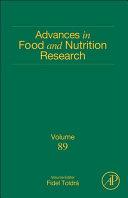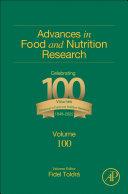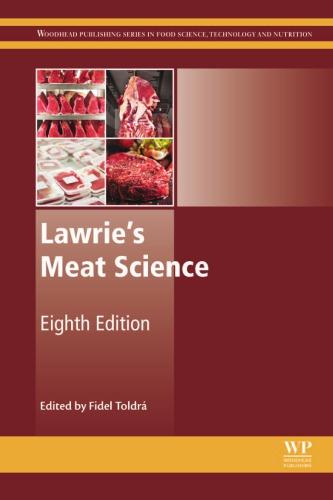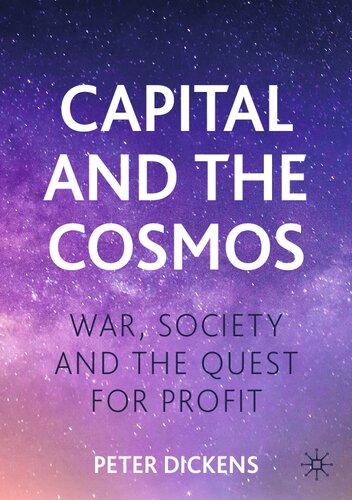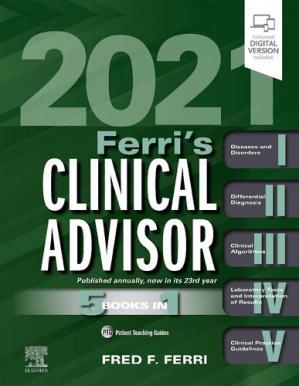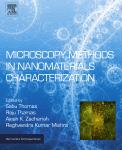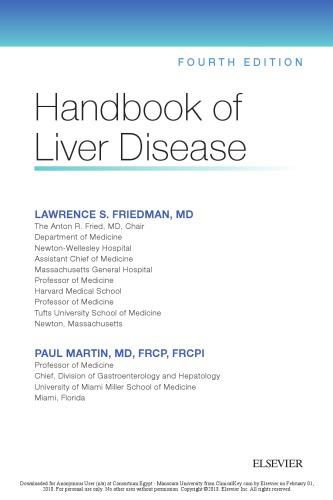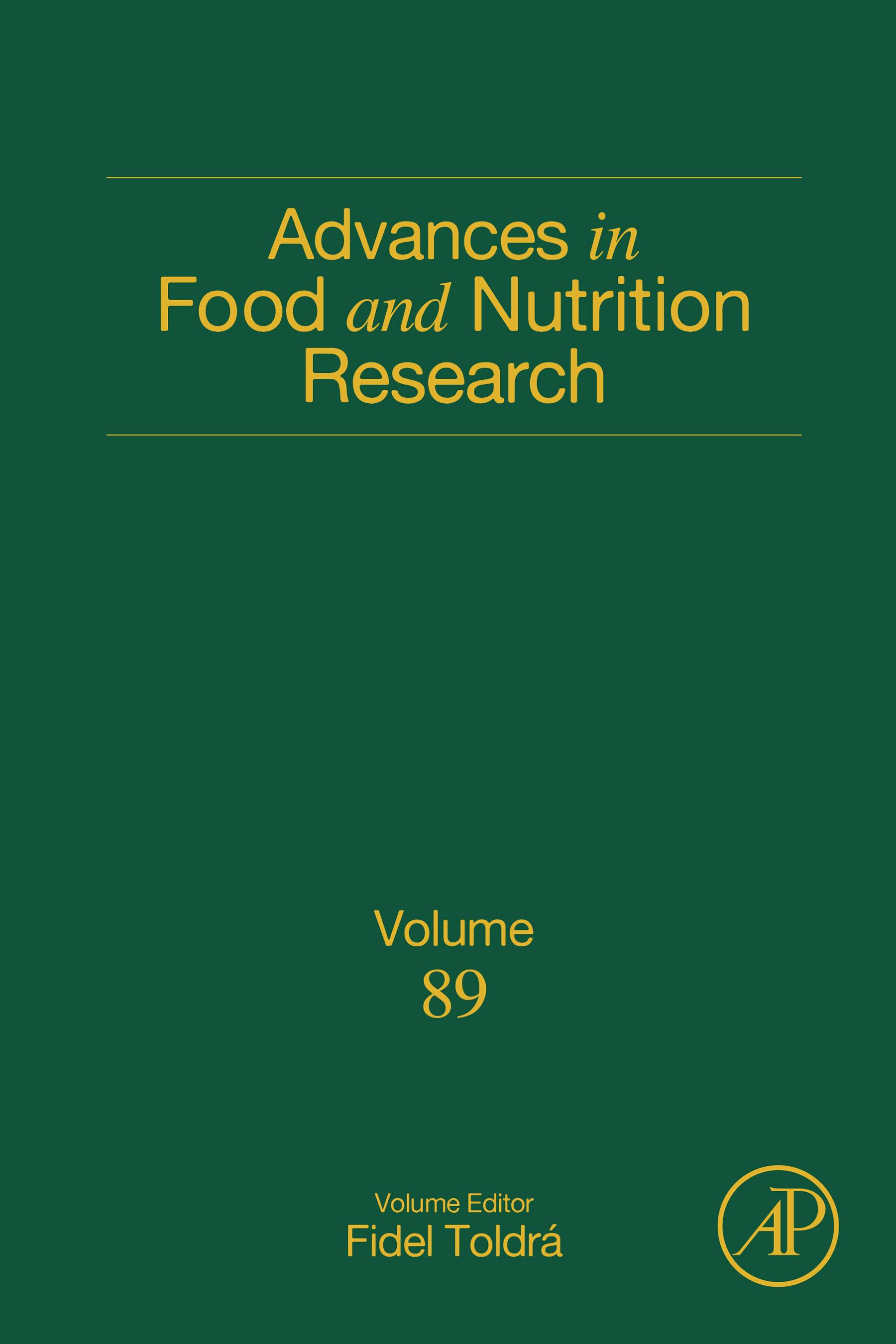https://ebookmass.com/product/advances-in-food-andnutrition-research-fidel-toldra/
Instant digital products (PDF, ePub, MOBI) ready for you
Download now and discover formats that fit your needs...
Advances in Food and Nutrition Research 1st Edition Fidel Toldrá
https://ebookmass.com/product/advances-in-food-and-nutritionresearch-1st-edition-fidel-toldra/
ebookmass.com
Lawrie's Meat Science, 8th ed 8th Edition Fidel Toldra
https://ebookmass.com/product/lawries-meat-science-8th-ed-8th-editionfidel-toldra/
ebookmass.com
Krause and Mahanu2019s Food and the Nutrition Care Process E-Book (Krauseu2019s Food & Nutrition Therapy)
https://ebookmass.com/product/krause-and-mahans-food-and-thenutrition-care-process-e-book-krauses-food-nutrition-therapy/
ebookmass.com
Capital and the Cosmos. War, Society and the Quest for Profit Peter Dickens
https://ebookmass.com/product/capital-and-the-cosmos-war-society-andthe-quest-for-profit-peter-dickens/
ebookmass.com
Equinox: A Lake Prophet Mystery (The Lake Prophet Mysteries Book 2) Eli Easton & Rj Scott
https://ebookmass.com/product/equinox-a-lake-prophet-mystery-the-lakeprophet-mysteries-book-2-eli-easton-rj-scott/
ebookmass.com
Ferri's Clinical Advisor 2021: 5 Books in 1 Fred F. Ferri MD FACP Fred F. Ferri Md Facp
https://ebookmass.com/product/ferris-clinical-advisor-2021-5-booksin-1-fred-f-ferri-md-facp-fred-f-ferri-md-facp/
ebookmass.com
Microscopy Methods in Nanomaterials Characterization. A volume in Micro and Nano Technologies 1st Edition Edition
Sabu Thomas
https://ebookmass.com/product/microscopy-methods-in-nanomaterialscharacterization-a-volume-in-micro-and-nano-technologies-1st-editionedition-sabu-thomas/ ebookmass.com
(eBook PDF) How to Interpret Literature: Critical Theory for Literary and Cultural Studies 4th Edition
https://ebookmass.com/product/ebook-pdf-how-to-interpret-literaturecritical-theory-for-literary-and-cultural-studies-4th-edition/
ebookmass.com
Penalizing: A Fresh Start Hockey Romance (Portland Icehawks Book 5) Jami Davenport
https://ebookmass.com/product/penalizing-a-fresh-start-hockey-romanceportland-icehawks-book-5-jami-davenport/
ebookmass.com
https://ebookmass.com/product/handbook-of-liver-disease-4e-4thedition-lawrence-friedman/
ebookmass.com
FOODANDNUTRITION RESEARCH
ADVISORYBOARDS
DavidRodríguez-Lázaro
Loong-TakLim
MichaelEskin
IsabelFerreira
CrispuloGallegos
Se-KwonKim
KeizoArihara
SERIESEDITORS
GEORGEF.STEWART(1948–1982)
EMILM.MRAK(1948–1987)
C.O.CHICHESTER(1959–1988)
BERNARDS.SCHWEIGERT(1984–1988)
JOHNE.KINSELLA(1989–1993)
STEVEL.TAYLOR(1995–2011)
JEYAKUMARHENRY(2011–2016)
FIDELTOLDRÁ(2016– )
ADVANCESIN FOODANDNUTRITION RESEARCH
Editedby FIDELTOLDRÁ
InstitutodeAgroquímicayTecnologíadeAlimentos(CSIC), Valencia,Spain
AcademicPressisanimprintofElsevier
50HampshireStreet,5thFloor,Cambridge,MA02139,UnitedStates 525BStreet,Suite1650,SanDiego,CA92101,UnitedStates TheBoulevard,LangfordLane,Kidlington,OxfordOX51GB,UnitedKingdom 125LondonWall,London,EC2Y5AS,UnitedKingdom
Firstedition2019
Copyright©2019ElsevierInc.AllRightsReserved.
Nopartofthispublicationmaybereproducedortransmittedinanyformorbyanymeans,electronic ormechanical,includingphotocopying,recording,oranyinformationstorageandretrievalsystem, withoutpermissioninwritingfromthepublisher.Detailsonhowtoseekpermission,further informationaboutthePublisher’spermissionspoliciesandourarrangementswithorganizationssuch astheCopyrightClearanceCenterandtheCopyrightLicensingAgency,canbefoundatourwebsite: www.elsevier.com/permissions.
Thisbookandtheindividualcontributionscontainedinitareprotectedundercopyrightbythe Publisher(otherthanasmaybenotedherein).
Notices
Knowledgeandbestpracticeinthisfieldareconstantlychanging.Asnewresearchandexperience broadenourunderstanding,changesinresearchmethods,professionalpractices,ormedical treatmentmaybecomenecessary.
Practitionersandresearchersmustalwaysrelyontheirownexperienceandknowledgeinevaluating andusinganyinformation,methods,compounds,orexperimentsdescribedherein.Inusingsuch informationormethodstheyshouldbemindfuloftheirownsafetyandthesafetyofothers,including partiesforwhomtheyhaveaprofessionalresponsibility.
Tothefullestextentofthelaw,neitherthePublishernortheauthors,contributors,oreditors,assume anyliabilityforanyinjuryand/ordamagetopersonsorpropertyasamatterofproductsliability, negligenceorotherwise,orfromanyuseoroperationofanymethods,products,instructions,orideas containedinthematerialherein.
ISBN:978-0-12-817171-4
ISSN:1043-4526
ForinformationonallAcademicPresspublications visitourwebsiteat https://www.elsevier.com/books-and-journals
Publisher: ZoeKruze
AcquisitionEditor: SamMahfoudh
EditorialProjectManager: LeticiaM.Lima
ProductionProjectManager: DennyMansingh
CoverDesigner: GregHarris
TypesetbySPiGlobal,India
Prefacexiii
1.Geneticdeterminantsofbeverageconsumption:Implications fornutritionandhealth1
MarilynC.Cornelis
1. Introduction2
2. Determinantsofbeverageconsumption3
3. Geneticdeterminantsofbeverageconsumption4
4. Implicationsofgeneticknowledgeonbeverageconsumption28
5. Conclusions35 Acknowledgment36 References36 Furtherreading52
2.Currentfeedingstrategiestoimproveporkintramuscularfat contentanditsnutritionalquality53
C.M.Alfaia,P.A.Lopes,M.S.Madeira,J.M.Pestana,D.Coelho,F.Toldrá, andJ.A.M.Prates
1. Introduction54
2. Qualityofporkfatandfattyacids55
3. Feedingstrategiestoincreaseporkintramuscularfatcontent60
4. Feedingstrategiestoimproveporkfattyacidprofile70
5. Concludingremarksandchallenges84 Acknowledgments85 References86 Furtherreading94
3.Dairyfoodsandpositiveimpactontheconsumer’shealth95 SilvaniVerruck,CelsoFasuraBalthazar,RamonSilvaRocha,RamonSilva, ErickAlmeidaEsmerino,TatianaColomboPimentel,M ^ onicaQueirozFreitas, MarciaCristinaSilva,AdrianoGomesdaCruz, andElaneSchwindenPrudencio
1. Introduction96
2. Fermentedmilks98
3. Cheese112
4. Butter121
5. Icecream132
6. Dairydesserts141
7. Conclusions145 References145 Furtherreading164
4.Food-derivedbioactivepeptidesandtheirroleinameliorating hypertensionandassociatedcardiovasculardiseases165 AdvaitaGanguly,KumakshiSharma,andKaustavMajumder
1. Introduction166
2. Pathophysiologyofhypertension167
3. Food-derivedbioactivepeptides175
4. Structuralfeaturesofbioactivepeptides183
5. Molecularmechanismsoffood-derivedantihypertensivepeptides190
6. Conclusion193 References193 Furtherreading207
5.Effectsofphytochemicalsagainstdiabetes209 MerveBacanli,SevtapAydinDilsiz,NurşenBaşaran,andA.AhmetBaşaran
1. Introduction209
2. Diabetes210
3. Diabetesandoxidativestress211
4. Phytochemicals213
5. Phytochemicalsanddiabetes216
6. Conclusion229 References230
6.DMHF(2,5-dimethyl-4-hydroxy-3(2H)-furanone),avolatilefood componentwithattractivesensoryproperties,brings physiologicalfunctionsthroughinhalation239 K.Arihara,I.Yokoyama,andM.Ohata
1. Introduction240
2. WhatistheMaillardreaction?241
3. VolatilecomponentsgeneratedbytheMaillardreaction242
4. DMHFandfoods244
5. Physiologicalfunctionsofodors245
6. DMHFonphysiologicalparametersthroughinhalation246
7. Conclusions254 References254
7.Challengesandopportunitiesregardingtheuseofalternative proteinsources:Aquacultureandinsects259
BelenGómez,PauloE.S.Munekata,ZhenzhouZhu,FranciscoJ.Barba, FidelToldrá,PredragPutnik,DanijelaBursacKovacevic,andJoseM.Lorenzo
1. Introduction260
2. Aquacultureproductsnutritionalcomposition265
3. Insectsnutritionalcomposition272
4. Extractionmethodstorecoverproteins278
5. Analysisoftheextracts279
6. Purificationandfractionationstages283
7. Developmentofnewproductsbasedoninsectproteinsandaquaculture products284
8. Challengesandfutureperspectivesofaquacultureproductsasprotein sources286
9. Challengesandfutureperspectivesofinsectsasproteinssource288 Acknowledgments289 References289
8.Mycotoxinsinfoodandfeed297
JelkaPleadin,JadrankaFrece,andKsenijaMarkov
1. Introduction298
2. Propertiesanddivision300
3. Factorsfacilitatingmycotoxinsynthesis302
4. Toxicogenicmolds305
5. Occurrenceinfoodandfeed308
6. Toxiceffects312
7. Majorgroupsandrepresentatives314
8. Analyticalmethods325
9. Preventativemeasures328
10. Reductionmethods331
11. Conclusion337 Acknowledgment338 References338 Furtherreading345
Contributors
C.M.Alfaia
CentrodeInvestigac ¸aoInterdisciplinaremSanidadeAnimal(CIISA),FaculdadedeMedicina Veterina ´ ria,UniversidadedeLisboa,AvenidadaUniversidadeTecnica,Po ´ loUniversita ´ rio doAltodaAjuda,Lisbon,Portugal
K.Arihara
SchoolofVeterinaryMedicine,KitasatoUniversity,Tokyo,Japan
MerveBacanli
FacultyofPharmacy,DepartmentofPharmaceuticalToxicology,HacettepeUniversity, Ankara,Turkey
CelsoFasuraBalthazar
UniversidadeFederalFluminense(UFF),FaculdadedeVeterina ´ ria,Nitero ´ i,Brazil
FranciscoJ.Barba
NutritionandFoodScienceArea,PreventiveMedicineandPublicHealth,FoodScience, ToxicologyandForensicMedicineDepartment,FacultyofPharmacy,Universitatde Vale ` ncia,Vale ` ncia,Spain
A.AhmetBaşaran
FacultyofPharmacy,DepartmentofPharmacognosy,HacettepeUniversity,Ankara,Turkey
NurşenBaşaran
FacultyofPharmacy,DepartmentofPharmaceuticalToxicology,HacettepeUniversity, Ankara,Turkey
DanijelaBursacKovacevic
FacultyofFoodTechnologyandBiotechnology,UniversityofZagreb,Zagreb,Croatia
D.Coelho
CentrodeInvestigac ¸ a ˜ oInterdisciplinaremSanidadeAnimal(CIISA),FaculdadedeMedicina Veterina ´ ria,UniversidadedeLisboa,AvenidadaUniversidadeTecnica,Po ´ loUniversita ´ rio doAltodaAjuda,Lisbon,Portugal
MarilynC.Cornelis
DepartmentofPreventiveMedicine,NorthwesternUniversityFeinbergSchoolof Medicine,Chicago,IL,UnitedStates
AdrianoGomesdaCruz
InstitutoFederaldeEducac ¸ao,Ci^ enciaeTecnologiadoRiodeJaneiro(IFRJ), DepartamentodeAlimentos,RiodeJaneiro,Brazil
SevtapAydinDilsiz
FacultyofPharmacy,DepartmentofPharmaceuticalToxicology,HacettepeUniversity, Ankara,Turkey
ErickAlmeidaEsmerino
UniversidadeFederalFluminense(UFF),FaculdadedeVeterina ´ ria,Nitero ´ i,Brazil
JadrankaFrece
FacultyofFoodTechnologyandBiotechnology,UniversityofZagreb,Zagreb,Croatia
M ^ onicaQueirozFreitas
UniversidadeFederalFluminense(UFF),FaculdadedeVeterina ´ ria,Nitero ´ i,Brazil
AdvaitaGanguly
ComprehensiveTissueCentre,UAHTransplantServices,AlbertaHealthServices, Edmonton,AB,Canada
BelenGo ´ mez
CentroTecnolo ´ gicodelaCarnedeGalicia,Ourense,Spain
P.A.Lopes
CentrodeInvestigac ¸aoInterdisciplinaremSanidadeAnimal(CIISA),FaculdadedeMedicina Veterina ´ ria,UniversidadedeLisboa,AvenidadaUniversidadeTecnica,Po ´ loUniversita ´ rio doAltodaAjuda,Lisbon,Portugal
JoseM.Lorenzo
CentroTecnolo ´ gicodelaCarnedeGalicia,Ourense,Spain
M.S.Madeira
CentrodeInvestigac ¸ a ˜ oInterdisciplinaremSanidadeAnimal(CIISA),FaculdadedeMedicina Veterina ´ ria,UniversidadedeLisboa,AvenidadaUniversidadeTecnica,Po ´ loUniversita ´ rio doAltodaAjuda,Lisbon,Portugal
KaustavMajumder
DepartmentofFoodScienceandTechnology,UniversityofNebraska-Lincoln,Lincoln, NE,UnitedStates
KsenijaMarkov
FacultyofFoodTechnologyandBiotechnology,UniversityofZagreb,Zagreb,Croatia
PauloE.S.Munekata
CentroTecnolo ´ gicodelaCarnedeGalicia,Ourense,Spain;DepartmentofFood Engineering,CollegeofAnimalScienceandFoodEngineering,UniversityofSaoPaulo, SaoPaulo,Brazil
M.Ohata
CollegeofBioresourceSciences,NihonUniversity,Tokyo,Japan
J.M.Pestana
CentrodeInvestigac ¸ a ˜ oInterdisciplinaremSanidadeAnimal(CIISA),FaculdadedeMedicina Veterina ´ ria,UniversidadedeLisboa,AvenidadaUniversidadeTecnica,Po ´ loUniversita ´ rio doAltodaAjuda,Lisbon,Portugal
TatianaColomboPimentel
InstitutoFederaldoParana ´ (IFPR),CampusParanavaı´,Paranavaı´,Brazil JelkaPleadin
CroatianVeterinaryInstitute,LaboratoryforAnalyticalChemistry,Zagreb,Croatia
J.A.M.Prates
CentrodeInvestigac ¸aoInterdisciplinaremSanidadeAnimal(CIISA),FaculdadedeMedicina Veterina ´ ria,UniversidadedeLisboa,AvenidadaUniversidadeTecnica,Po ´ loUniversita ´ rio doAltodaAjuda,Lisbon,Portugal
ElaneSchwindenPrudencio
UniversidadeFederaldeSantaCatarina(UFSC),DepartamentodeCi^ enciaeTecnologiade Alimentos,Floriano ´ polis,Brazil
PredragPutnik
FacultyofFoodTechnologyandBiotechnology,UniversityofZagreb,Zagreb,Croatia
KumakshiSharma
Health,SafetyandEnvironmentBranch,NationalResearchCouncilCanada,Edmonton, AB,Canada
MarciaCristinaSilva
InstitutoFederaldeEducac ¸ao,Ci^ enciaeTecnologiadoRiodeJaneiro(IFRJ), DepartamentodeAlimentos,RiodeJaneiro,Brazil
RamonSilva
UniversidadeFederalFluminense(UFF),FaculdadedeVeterina ´ ria,Nitero ´ i;InstitutoFederal deEducac ¸ao,Ci^ enciaeTecnologiadoRiodeJaneiro(IFRJ),DepartamentodeAlimentos, RiodeJaneiro,Brazil
RamonSilvaRocha
UniversidadeFederalFluminense(UFF),FaculdadedeVeterina ´ ria,Nitero ´ i;InstitutoFederal deEducac ¸ao,Ci^ enciaeTecnologiadoRiodeJaneiro(IFRJ),DepartamentodeAlimentos, RiodeJaneiro,Brazil
FidelToldra ´
InstitutodeAgroquı´micayTecnologı´adeAlimentos(CSIC),Valencia,Spain SilvaniVerruck
UniversidadeFederaldeSantaCatarina(UFSC),DepartamentodeCi^ enciaeTecnologiade Alimentos,Floriano ´ polis,Brazil
I.Yokoyama
SchoolofVeterinaryMedicine,KitasatoUniversity,Tokyo,Japan
ZhenzhouZhu
CollegeofFoodScienceandEngineering,WuhanPolytechnicUniversity,Wuhan,China
Preface
Thisvolumeof AdvancesinFoodandNutritionResearch compileseight chaptersreportingavarietyofinterestingtopicslikethegeneticdeterminantsofbeverageconsumptionanditshealthimplications,thecurrent feedingstrategiestoimproveporkintramuscularfatcontentanditsnutritionalquality,theimpactofdairyfoodsonconsumers’health,thebenefits offood-derivedbioactivepeptidesforhypertensionandassociatedcardiovasculardiseases,theeffectsofphytochemicalsagainstdiabetes,thevolatile foodcomponentDMHFthatimprovespalatabilityandphysiological functions,theuseofalternativeproteinsourcesfromaquacultureand insects,andtheoccurrenceandpreventionofmycotoxinsinfoods.
Chapter1 bringsnewinsightsonthegeneticdeterminantsofcommon beverageconsumptionandhowresearchinthisfieldiscontributinginsight towhatandhowmuchweconsumeandwhythisgeneticknowledge mattersfromaresearchandpublichealthperspective,andalsohowthe genome-wideassociationstudieshighlightanimportantbehavior-reward component(asopposedtotaste)tobeverageconsumptionwhichmayserve asapotentialbarriertodietaryinterventions. Chapter2 addressescurrent feedingstrategiestoameliorateporksensoryattributesandnutritional qualitybyincreasingintramuscularfatdepositionandimprovingfattyacid composition,respectively.Italsodiscussesfeedingsourcesofn-3polyunsaturatedfattyacidstopigs,mainlyfrommarineorigin(richin eicosapentaenoicanddocosahexaenoicacids),thatincreasetheircontent inpork,thusimprovingthehealthvalueofitsfattyacidprofile,andhow theinclusionofmicroalgaeandseaweedsinfeedrepresentsapromising approachforthemaintenanceanddevelopmentofthelivestocksector.
Chapter3 bringsnewinsightsonthepositiveimpactsoffermentedmilk, cheese,butter,icecream,anddairydessertscomponentsontheconsumer’s health.Aspecialfocusisgiventothemainmechanismsresponsibleand essentialforabetterunderstandingofnutritionalandfunctionalvaluesof thecomponentsofmilkanddairyproducts. Chapter4 presentspotent bioactivepeptides,especiallywithantiinflammatory,antioxidant,and angiotensin-convertingenzyme-Iinhibitoryactivity,fromdifferentfood sourcesasapromisingendeavortowardnutraceutical-baseddietarymanagementandpreventionofhypertension.Italsodiscusseshowtheunderstandingofthepathophysiologyofhypertensionandtheactionmechanismsof
thebioactivepeptideswouldhelpinthedesignandcharacterizationofmore potentpeptides. Chapter5 focusesontherelationshipbetweendiabetes mellitusandpreventiverolesofvariousphytochemicals.Someofthemsuch asflavonoids,lignans,andprophenylphenolscanplayapreventiveroleon diabetesviatheirantioxidantproperties. Chapter6 dealswithavolatile foodcomponentDMHF(2,5-dimethyl-4-hydroxy-3(2H)-furanone),with attractivesensoryproperties.Thissubstanceisanaromacompound,generatedinvariousfoodsbytheMaillardreactionduringcookingand processing,thatexhibitsastrawberry-likeflavorwhendilutedanda caramel-likearomawhenconcentrated.Itbringsphysiologicalfunctions andbioactivitythroughinhalation. Chapter7 addressesthepotentialof insectsandproductsderivedfromaquacultureassustainablealternative proteinsources.Italsodiscussesmajorchallengesliketheneedtoadapt technologiesandmethodsfortheproductionandwell-characterizationof thenewingredients,theevaluationofsuchnewproteinsinthedietand itssafetyofuse,includingpotentialallergies,andtheacceptanceby consumers.Finally, Chapter8 bringsthelatestdevelopmentsinmycotoxins infoods.Itdescribestheharmfuleffectsofmycotoxinsobservedinhumans andanimalslikecarcinogenicity,teratogenicity,immunetoxicity, neurotoxicity,hepatotoxicity,nephrotoxicity,reproductiveanddevelopmentaltoxicity,indigestion,andsoforth.Thechapterincludesthedescriptionofpreventativemeasurescapableofreducingthecontaminationtothe minimumaswellasmethodsformycotoxinreductionorelimination.
Insummary,thisvolumepresentsthecombinedeffortsof38professionalsdevelopingtheirresearchin8countries(Canada,USA,Brazil, China,Turkey,Japan,Croatia,Portugal,andSpain)withavarietyof backgroundsandexpertise.TheEditorwishestothanktheproductionstaff andallthecontributorsforsharingtheirexperienceandformakingthisbook possible.
FIDEL TOLDRA ´ Editor
Geneticdeterminantsofbeverage consumption:Implicationsfor nutritionandhealth
MarilynC.Cornelis*
DepartmentofPreventiveMedicine,NorthwesternUniversityFeinbergSchoolofMedicine,Chicago,IL, UnitedStates
*Correspondingauthor:e-mailaddress:marilyn.cornelis@northwestern.edu
Contents
1. Introduction2
2. Determinantsofbeverageconsumption3
3. Geneticdeterminantsofbeverageconsumption4
3.1 Earlyapproaches:Linkageandcandidategeneanalysis5
3.2 Recentapproaches:Genome-wideanalysis7
4. Implicationsofgeneticknowledgeonbeverageconsumption28
4.1 Researchtools28
4.2 Publichealth34
5. Conclusions35 Acknowledgment36 References36 Furtherreading52
Abstract
Beveragesmakeimportantcontributionstonutritionalintakeandtheirroleinhealth hasreceivedmuchattention.Thisreviewfocusesonthegeneticdeterminantsofcommonbeverageconsumptionandhowresearchinthisfieldiscontributinginsightto whatandhowmuchweconsumeandwhythisgeneticknowledgemattersfroma researchandpublichealthperspective.Theearliesteffortsingene-beveragebehavior mappinginvolvedgeneticlinkageandcandidategeneanalysisbuttheseapproaches havebeenlargelyreplacedbygenome-wideassociationstudies(GWAS).GWAShave identifiedbiologicallyplausiblelociunderlyingalcoholandcoffeedrinkingbehavior. NoGWAShasidentifiedvariantsspecificallyassociatedwithconsumptionoftea,juice, soda,wine,beer,milkoranyothercommonbeverage.Thusfar,GWAShighlightan importantbehavior-rewardcomponent(asopposedtotaste)tobeverageconsumption whichmayserveasapotentialbarriertodietaryinterventions.Lociidentifiedhavebeen usedinMendelianrandomizationandgene beverageinteractionanalysisofdisease
butresultshavebeenmixed.ThisresearchisnecessaryasitinformstheclinicalrelevanceofSNP-beverageassociationsandthusgenotype-basedpersonalizednutrition, whichisgaininginterestinthecommercialandpublichealthsectors.
1.Introduction
Waterisanessentialnutrientforlife( Jequier&Constant,2009).Beveragescontributeapproximately80%tototalwaterintakewiththeremainderprovidedbysolidfoods(EFSA,2010; Electrolytes&Water,2005).After water,coffee,tea,beer,milk,100%juice,sugarsweetenedbeverages(SSB) andwineareamongthemostwidelyconsumedbeveragesintheworld (Euromonitor,2018; Neves,Trombin,Lopes,Kalaki,&Milan,2012; Singhetal.,2015).Unlikeplainwater,beveragesarealsoimportantsources ofenergy,othervitaminsandmineralsaswellas1000sofnon-nutrients, manyofwhicharebioactive.Coffeeandtea,forexample,arenaturally energy-freebutimportantsourcesofcaffeineandpolyphenols.Beerand winebothcontainalcoholbutalsopresentwithuniqueconstituentsincludinghopsandresveratrol,respectively.JuiceandSSBarebothenergydense buttheformerisalsoanaturalsourceofvitamins.
Withtheirwideconsumptionandcontributionstonutrientintakethere isgreatinterestintherolebeveragesplayinhealth.Epidemiologicalstudies supportabeneficialroleofmoderatecoffeeintakeinreducingriskofseveral chronicdiseasesbutheavyintakeislikelyharmfulonpregnancyoutcomes (Pooleetal.,2017).Teamightalsoreduceriskoftype2diabetes(T2D), metabolicsyndrome(MetS)(Marventanoetal.,2016; Yang,Mao,Xu, Ma,&Zeng,2014),osteoporosis(Sunetal.,2017)andcardiovasculardiseases(CVD)(Pangetal.,2016).Winedrinkingmayhaveadose-dependent associationwithhealth:lowdosesmightprotectagainstbreastcancerand CVDwhilehighdosesoffernobenefitorincreasedrisk(Chenetal., 2016; deGaetano,DiCastelnuovo,Rotondo,Iacoviello,&Donati, 2002).Healthbenefitsorrisksspecifictobeerandmilkareunclear (Gijsbersetal.,2016; Guoetal.,2017; Kaplan,Palmer,&Denke,2000; Larsson,Crippa,Orsini,Wolk,&Michaelsson,2015; Lee,Fu,Chung, Jang,&Lee,2018; Lietal.,2011; Liuetal.,2015; Mullie,Pizot,& Autier,2016; Soedamah-Muthuetal.,2011).Therearecurrentlyno healthbenefitstoSSBconsumptionbutratherconvincingdatasupporting itsroleinobesitywhichis,inturn,ariskfactorforseveraldiseases
(Maliketal.,2010; Malik,Schulze,&Hu,2006 ).Acaveattoourknowledgepertainingtobeverageconsumptionandhumanhealthisthatmuch ofitisderivedfromepidemiologic alstudieswhichhavelimitations (Rothman,Greenland,&Lash,2008 ; Taubes,1995 ; Willett,1998 ).
Thisreviewfocusesonthegeneticdeterminantsofcommonbeverage consumptionandhowresearchinthisfieldiscontributinginsighttowhat andhowmuchweconsumeandwhythisgeneticknowledgemattersfroma researchandpublichealthperspective.
2.Determinantsofbeverageconsumption
Understandingfactorscontributingtobeverageconsumptionhas importantpublichealthandresearchimplications.Knowledgeofboth externalandinternalcuesforbeverageintakemayinformthecausalrole eachbeveragehasinhealth(research)andthepotentialpopulationsubgroupsmostsusceptibletothehealthconsequencesofitsregularconsumption(publichealth).Thirstisanimportantdeterminantofbeverageintake, butintoday’ssocietytheamountandchoiceofbeverageconsumedis governedbyamultitudeofindividualandsocietalfactorssuchasavailability, mood,socialcontext,healthstatus,education,convenience,cost,cultural influences,andsensoryattributessuchassmellandtaste(Block,Gillman, Linakis,&Goldman,2013; Drewnowski,1997; Drewnowski, Henderson,Levine,&Hann,1999; Glanz,Basil,Maibach,Goldberg,& Snyder,1998; Neumark-Sztainer,Story,Perry,&Casey,1999; Wardle, Carnell,&Cooke,2005).Consumptionofcoffee,forexample,tendsto positivelycorrelatewithage,smoking,andalcoholconsumptionandmay alsobeimpactedbyperceivedhealthconsequencesofthebeverage (Cornelis,2012).Degreeofeconomicdevelopment,religiousandcultural norms,theavailabilityandthelevelandeffectivenessofpoliciesaresocietal factorscontributingtoalcoholconsumptionbehaviorswhileage,gender, socialeconomicstatus(SES)andprioralcoholexposureareimportantindividuallevelfactors(Baboretal.,2010).Theacutepositiveornegativereinforcingpropertiesofalcoholandcaffeineareespeciallyimportantin determiningalcoholicbeverageandcoffeedrinkingpatterns(Cornelis, 2012; Koob&Volkow,2016; Kuntsche,Knibbe,Gmel,&Engels, 2005).Physiologicaleffectsofbeveragesareintrinsicandoftenvarybetween individuals.Geneticsalsoplayaroleinbeverageconsumptionbehaviorand morelikelywithregardstothesephysiologicaleffects.
3.Geneticdeterminantsofbeverageconsumption
Twinstudieshavelargelybeenthestandardapproachestoestimating thegeneticorheritablecomponentofbeverageconsumptionbehaviors whichcanvaryfrom0(notheritable)to1(completelyinherited).Twin studiesestimateheritabilitybycomparingmonozygotictwins,whoshare thecommonenvironmentandhaveidenticalgenetics,todizygotictwins, whoalsosharethecommonenvironmentbutonlyhalftheirgenetics (Neale&Cardon,1994; Turkheimer,D’Onofrio,Maes,&Eaves,2005).
Inanearliertwinstudyby deCastro(1993),theheritabilityestimatefor amountofdrinkingwaterconsumedwas0.43,whichwasslightlyhigher thanthe0.37estimatefortotalwater(foodandbeverages).Heritabilityestimatesforalcohol,soda,milk,coffeeandfruitjuicewere0.45,0.54,0.04, 0.69and0.12,respectively. Hasselbalchetal.(2010) reportedlowerestimatesforsoda:0.26and0.30formenandwomen,respectively,while Teucheretal.(2007) reportedamuchhigherestimateforfruitjuice (0.70).Heritabilityestimatesforself-reportedtotalcaffeineintake(derived fromcaffeine-containingcoffee,teaandsoda)rangedbetween0.30and 0.58,withhigherestimatesreportedforheavyuse(upto0.77)(Yang, Palmer,&deWit,2010).Studiesthatseparatedheritabilityestimatesbycaffeinesourcereporthigherheritabilityforcoffeerelativetoothersources (Luciano,Kirk,Heath,&Martin,2005; Teucheretal.,2007; Vink, Staphorsius,&Boomsma,2009).Twinstudiesaswellasfamilyandadoption studiesofhabitualalcoholconsumptionoralcoholismhavelargelyfocused onmalesandreportheritabilityestimatesbetween0.30and0.60(McGue, 1999; Prescott&Kendler,1999; Reedetal.,1994; Teucheretal.,2007). HeathandMartin(1988) proposethatthedecisiontoabstainfromdrinking isnotgeneticallydetermined,buttheonsetandamountconsumedoncethat decisionismadeareinfluencedbygeneticfactors.
Twinstudiesarepowerfulepidemiologicalapproachestomeasuring thecontributionofgeneticstoagiventraitbutareoftenunderpowered andsubjecttobiaswhichlikelyaddtobetweenstudydifferencesinestimates ofheritability(Kendler,1993; Zaitlen&Kraft,2013; Zuk,Hechter, Sunyaev,&Lander,2012).Furthermore,althoughresultsaboveprovide compellingevidenceforageneticinfluenceonbeverageintakeandchoice, theydonotindicatethespecificgenesthatincreaseordecreasedrinking behaviors.
3.1Earlyapproaches:Linkageandcandidategeneanalysis
Theearliesteffortsingene-traitmappinginvolvedgeneticlinkageandcandidategeneanalysis.Geneticlinkagestudiesdetermineinheritanceofa binaryorquantitativetraitamongfamilymembersinextensivepedigrees byevaluatingwhetheroneormoregeneticmarkersspacedacrossthe 23chromosomessegregatewiththetrait(Cantor,2014).Thisapproach roughlylocatesabroadchromosomalregion,whichmaycontain10sof 100sofgenes,thatco-segregatewiththetrait.Otherstrategiessuchasfine mappingandtargetedassociationanalysismustbeusedtofurtherrefinethe linkedregionandidentifythegeneofinterest(Cantor,2014).
Lactoseintolerance(orlactasenon-persistence)isacommonautosomal recessiveconditionresultingfromthephysiologicaldeclineinactivityof lactase-phlorizinhydrolase(LPH)inintestinalcellsafterweaningandhas asignificantimpactonmilkdrinkingbehavior.Theageofonsetvaries betweenpopulationsandinsomepopulationslactaseactivitypersistsata highlevelthroughoutadultlife(Sahi,1994; Sahi,Isokoski,Jussila,& Launiala,1972; Swallow,2003; Wangetal.,1998).Althoughthesequence ofthelactasegene(LCT,encodingLPH)hadbeenknownsince1991(Boll, Wagner,&Mantei,1991),thecausativemechanismforlactasepersistence remainedelusiveuntil2002whenalinkageanalysisofnineFinnishfamilies withhypolactasiaidentifiedavariantupstreamoftheinitiationcodonof LCT (LCT-13910C > T)whichdemonstratedcompleteassociationwith lactasepersistence(Enattahetal.,2002).
Thefirstlinkagestudiesonalcoholdependence(AD)fromthefamilybasedCollaborativeStudyontheGeneticsofAlcoholism(COGA)(Reich etal.,1998)andasib-pairstudyfromaSouthwestAmericanIndiantribe (Longetal.,1998)reportedabroadrisklocusonchromosome4qthatcontainsthegenesthatencodetheisoformsofalcoholdehydrogenase(ADH). Hilletal.(2004) reportedsupportforADlociatchromosome1q23.3-q25.1 inagenome-widelinkageanalysisofdoubleprobands.Thisregionwas followedupusingfine-mappinggenotypingandconfirmedsinglenucleotidepolymorphism(SNP)-ADassociationswithin ASTN1 (Hill,Weeks, Jones,Zezza,&Stiffler,2012).AdditionalADstudieshaveimplicatedother chromosomalregions(Dicketal.,2010; Edenberg&Foroud,2014; Wang etal.,2004).Thegeneticlinkageapproach,totheauthor’sknowledge,has notbeenappliedto habitual beverageconsumption.
Asecondapproachtoisolatinggeneticdeterminantsofatraitinvolves geneticassociationinpopulationorfamily-basestudiesandisessentiallya
formoflinkagemappingbutisallele-basedratherthanlocus-basedandis oftenhypothesisdriven.EffortsfocusonpotentiallyfunctionalSNPsin geneswithbiologicalplausibilityorinregionsidentifiedbylinkage. Inthecontextofbeverageconsumptionbehaviorahighlyimplicated pathwaypertainstotaste.Tasteisoneoftheprimarymeansofdetermining theacceptabilityofafoodandmighthavebeencriticaltothesurvivalof earlyhumansubjects(Tepper,2008).Theperceptionofsweet,umami andbittertastesisallmediatedviaG-coupledproteinreceptors,encoded bythe TAS1R and TAS2R tastereceptorgenefamilies,whilesaltyandsour tastesaretransducedviaionchannels(Wise,Hansen,Reed,&Breslin, 2007).Thereislittleknownregardinggeneticvariationinsaltyand sourtastes(Wiseetal.,2007).Incontrast,bittertastequalityisaffected byvariantsin TAS2R16,TAS2R38,TAS2R43 and TAS2R44 while variantsin TAS1R1 and TAS1R3 impactumamiandsweet(Drayna, 2005; Feeney,O’Brien,Scannell,Markey,&Gibney,2011; Kimetal., 2003; Mainland&Matsunami,2009; Shigemura,Shirosaki,Sanematsu, Yoshida,&Ninomiya,2009).Themoststudiedis TAS2R38,inparticular itsthreeSNPs,whichresultintwocommonhaplotypesthatarenamedfor theiraminoacidsubstitutions:PAV(proline,alanine,andvaline)andAVI (alanine,valine,andisoleucine)(Kim,Breslin,Reed,&Drayna,2004). TAS2R38 diplotypeinfluencestheabilitytotasteafamilyofbittercompoundsincludingphenylthiocarbamide(PTC)and6-n-propylthiouracil (PROP).Althoughthesecompoundsarenotfoundinfoodstuffsnaturally, PTC/PROP-relatedcompoundsarepresentinseveralbittertastingfruits andvegetables.PAVhomozygotesandheterozygotesperceivegreaterbitternessthanAVIhomozygotesthatperceivelittleornobitterness(Kim etal.,2004).Thislocushasbeensubjecttonumerousassociationstudies offoodandbeveragepreferences.Variationin TAS2R38 hasbeenlinked tocoffee,beer,spirits,greentea,sugarcontentofbeveragesandtotalalcohol ordrinkingstatus(Beckettetal.,2017; Choi,Lee,Yang,&Kim,2017; Duffyetal.,2004; Hayesetal.,2011; Mennella,Pepino,&Reed,2005; Ongetal.,2018; Ooi,Lee,Law,&Say,2010; Pernaetal.,2018; Ramos-Lopezetal.,2015; Wangetal.,2007).Variationinother TASR2 membershasalsobeenlinkedtobitterbeverageconsumption(Cornelis, 2012; Hayesetal.,2011; Ongetal.,2018; Pirastuetal.,2014; Wang etal.,2007).Mostofthesefindings,however,lackreplication.Although bitternessiswidelyclaimedtobeanevolutionarilyimportantindicatorof toxicity(Behrens&Meyerhof,2016; Drewnowski&Gomez-Carneros, 2000)notallbitterstimuliaretoxic(Glendinning,1994; Nissim,
Dagan-Wiener,&Niv,2017).Coffeeandbeerareprimeexampleswhereby theinnateeversiontobittertastedoesnothold.Indeed,variantsin TAS2R43 linkedtoincreasedperceptionofcaffeine,abittercompound, associatewithincreasedcoffeeconsumptionandlikingaccordingto candidate-SNPanalysis(Ongetal.,2018; Pirastuetal.,2014).Although coffeebitternessiseasilyoffsetbyadditives,someindividualsmayalsolearn toassociatethissensorycuewithsocialcontextorpostingestivesignals elicitedbybiologicallyactiveconstituentsofcoffee.Variationinthe TAS1R sweetandumamireceptorfamilyhasalsobeenlinkedtoalcoholconsumptionbehavior(Choietal.,2017),winedrinking(Choietal.,2017)and vodkaliking(Pirastuetal.,2012).
Besidestaste-relatedgenes,thecandidateapproachforalcohol-related traitshasadditionallyfocusedonalcoholmetabolismgenesincluding ADH, CYP2E1 and ALDH (Fig.1),aswellasgenemembersofseveralneurotransmittersystems: GIRK1,GABA-A,DRD2,SLC6A3,SLC6A4, TPH1,COMT,CHRM2 and OPRM1 (Edenberg&Foroud,2006; Matsuoetal.,2006; Reilly,Noronha,Goldman,&Koob,2017; Tawa, Hall,&Lohoff,2016).Forcoffeeandteadrinking,candidategenesinvolved incaffeinemetabolism(CYP1A2)andcaffeine’stargetofaction (ADORA2A,DRD2)havebeenexamined(Cornelis,2012; Cornelis, El-Sohemy,&Campos,2007).Genemembersofthebrainrewardsystem, particularly DRD2,havebeentestedforassociationswithSSB(Baik,2013; Eny,Corey,&El-Sohemy,2009; Ramos-Lopez,Panduro,RiveraIn ˜ iguez,&Roman,2018).
3.2Recentapproaches:Genome-wideanalysis
Withthehumangenomesequencedintheearly2000’sandmappedfrequenciesandpatternsofassociationamongmillionsofcommonSNPsin diversepopulations,theprimaryapproachtoidentifyinggeneticvariants forcomplextraitshasquicklytransitionedtogenome-wideassociation
Fig.1 Alcoholmetabolism.
studies(GWAS).GWASisbasedonthepremisethatacausalvariantis locatedonahaplotype,andthereforeamarkeralleleinlinkagedisequilibrium(LD)withthecausalvariantshouldpresentwithanassociationwitha traitofinterest(Hirschhorn&Daly,2005).Thisapproachisunbiasedwith respecttogenomicstructureandpreviousknowledgeofthetraitetiology, whichcontrastswithearlierapproaches,andthereforehasgreaterpotential torevealnovelgene-traitassociations.
Table1 providesdescriptionsofGWASlistedintheGWAScatalog (November26,2018)reportingsignificantSNP-drinkingbehaviorassociations.GWASdesignsincludedsinglesample,2-stage(i.e.,discoveryand replication)andmeta-analysis. Table2 presentsthoselocidefinedassignificantaccordingtoauthors’apriorithreshold.ResultsofGWASofADand beverage“liking”werealsoincluded.
3.2.1Alcohol
SuccessfulGWASofalcohol-relatedtraitshavebeenundertakenin European,AfricanAmerican,AsianandHispanicLatinopopulations.Most ofthesetargetedADandincludedstudysampleswithahighproportionof individualswithcomorbidpsychiatricdisordersand/orco-occurringdrug dependence.Severaleffortsreportnullfindings(Heathetal.,2011; Kapooretal.,2014; Lydalletal.,2011; Mbareketal.,2015; McGue etal.,2013; Zuoetal.,2012),butinabilitytoreplicatesomelocimaybe afunctionofbothcaseandcontrolascertainment(Franketal.,2012; Mailmanetal.,2007).MostrobustareassociationswithpotentiallyfunctionalSNPsthatalteralcoholmetabolism(Fig.1).Forexample,the ADH1B rs1229984Tallele(48His)resultsina40-to100-foldhigherrateofalcohol toacetaldehydemetabolism(i.e.,ethanoloxidation)(Edenberg,2000; Hurley,Bosron,Stone,&Amzel,1994).The ALDH2 rs671Aallele (504Lys)reduces ALDH2 activityandthusdecreasesacetaldehydetoacetate metabolism(i.e.,acetaldehydeoxidation)(Bosron&Li,1986; Enomoto, Takase,Yasuhara,&Takada,1991; Harada,Misawa,Agarwal,& Goedde,1980; Quillenetal.,2014).Acetaldehydeisatoxicsubstance whoseaccumulationleadstoahighlyaversivereactionthatincludesfacial flushing,nausea,andtachycardia.The ADH1B Hisand ALDH2 Lysvariants influencealcoholdrinkingbehaviorbyelevatingbloodacetaldehydelevels uponalcoholdrinkingwhichultimatelyreducessusceptibilitytodeveloping alcoholdrinkingproblems(Macgregoretal.,2009; Pengetal.,2010; Takeuchietal.,2011; Yokoyamaetal.,2008).
Table1 Genome-wideassociationstudiesofbeverageconsumptionreportingsignificantloci.
ReferencePhenotypePhenotypedefinedStudydesignNRace
Baik,Cho,Kim, Han,andShin (2011)
Alcohol drinking
Self-reportedalcoholconsumptionamongever drinkers
Questionnaire,alcoholg/dayinthepastmonth, derived
Population-basedmales
Takeuchietal. (2011)
AlcoholUse Disorder (NULL)
Alcohol drinking
AlcoholUseDisorderIdentificationTest (AUDIT)score: <8or 8score Replication 1113
Population-basedmales
Schumannetal. (2011)
Alcohol drinking
Self-reported“ever”vs“non-drinkers”alcohol consumption
Questionnaire,alcoholgou/wkalsoderived
Yangetal.(2013)
Alcohol drinking
Self-reportedalcoholconsumption
Self-reportedalcoholconsumptionamongever drinkers(sexstratified)
Questionnaire,alcoholg/dayperkg(nodetail)
Discovery733caJapanese
Population-based729co
Replication2794ca
Healthcenter-based1351co
Self-reported“drinkers”( 12drinksinpast year)vs“non-drinkers”alcoholconsumption In-personinterviews.
DiscoveryChinese
1population-based1420ca
1community-based3590co
Fordrinkers,alcoholg/dalsoderived(NULL)Replication4896ca
1population-based13,293co Continued
Table1 Genome-wideassociationstudiesofbeverageconsumptionreportingsignificantloci. cont’d
ReferencePhenotypePhenotypedefinedStudydesignNRace
Kapooretal. (2013) Alcohol drinking
Maximumnumberofdrinksconsumedamong drinkers
In-personinterview:“Whatisthelargest numberofdrinksyouhaveeverhadina24-h period”?(standardservingsizesperbeverage)
Meta-analysis
COGA:ADprobandsrecruited throughalcoholtreatmentprograms; relativesoftheprobandsand comparisonfamilies
SAGE:non-overlappingCOGA, FamilyStudyofCocaineDependence (FSCD),andCollaborativeGenetic StudyofNicotineDependence (COGEND)
4915EUR
Quillenetal. (2014) Alcohol drinking Maximumnumberofdrinksconsumedamong drinkers
In-personinterview,AD:DSM-IV
“Whatisthelargestnumberofalcoholicdrinks youhaveeverconsumedinaday?”and “Doesyourfaceflushafterdrinkingalittle alcohol?”
OneSample
MaleADprobandsandpedigreesfrom isolatedregion
272Chinese
Xuetal.(2015) Alcohol drinking
Maximumnumberofalcoholicbeverages consumedinanylifetime24-hperiod (MAXDRINKS)in-personinterview
Discovery
Yale-UPenn(recruitedforstudiesof geneticsofdrugorAD,familiesand unrelated) 2328EUR 3215AFR
Replication2736EUR
SAGE1276AFR
Adkinsetal.(2015) Alcohol drinking
Meanalcoholintakeoverdurationoffollow-up (i.e.transitionfromadolescentstoadulthood)
Meta-analysis
GreatSmokyMountainStudy(US, children)
Trajectoryestimateofalcoholconsumption (drinksperweek)acrossadolescenceandearly adulthood
ChristchurchHealthandDevelopment Study(CHDS):birthcohortchildren (NewZealand,1977)
2126EUR
In-personinterviews
Schumannetal. (2016) Alcohol drinking Alcoholg/damongdrinkers
Heavyvslight/nodrinking(NULL)
Self-reportedquestionnaires/diaries In-personinterviews
Jorgensonetal. (2017) Alcohol drinking
Individualswhoreporteddrinking 1dayper weekand 1drinkperdayweredefinedas “drinkers,”whereasthosewhoprovided negativeanswers(“nodays”and“none”)were consideredas“non-drinkers.”
Foralcoholdrinkers,theregularquantityof alcoholdrinksconsumedperweekwas calculatedbymultiplyingthetwoanswers
Self-reportedquestionnaire
VirginiaTwinStudyonAdolescent BehavioralDevelopment:twincohort US1974–1983
DiscoveryEUR
Meta-analysis70,460
Population-based74,711
Replication
Meta-analysis31,021
Population-based35,438
Meta-analysis
GeneticEpidemiologyResearchin
AdultHealthandAging(GERA)
cohort:membersoftheKaiser
PermanenteMedicalCarePlan, NorthernCaliforniaRegion(KPNC)
23,104coEUR
47,967caHisp/Latino EastAsian 2673coAA 4374ca 3288co 2746ca 1165co 1310ca
Continued

